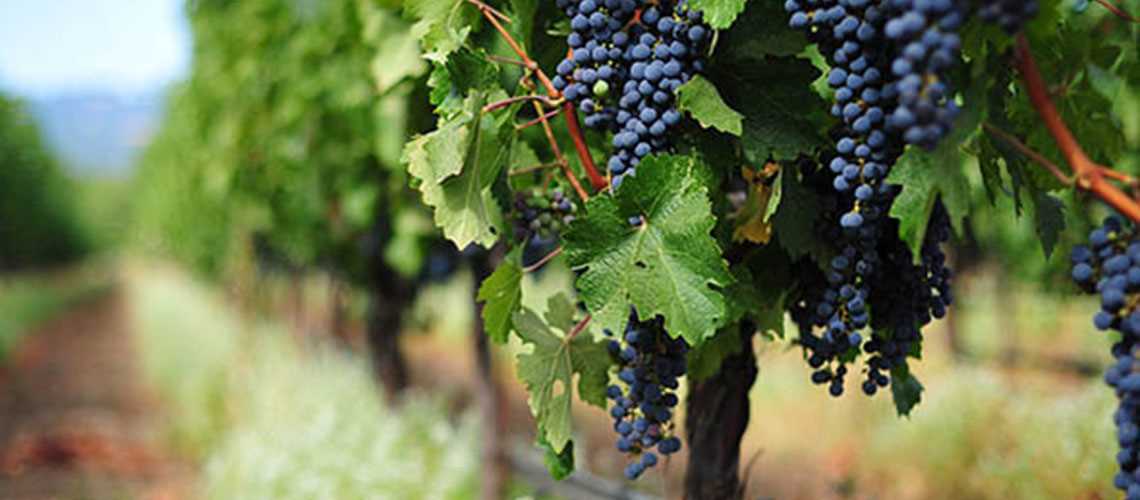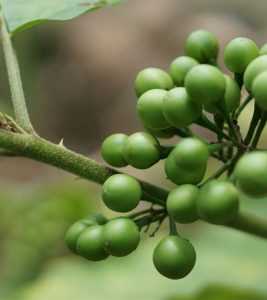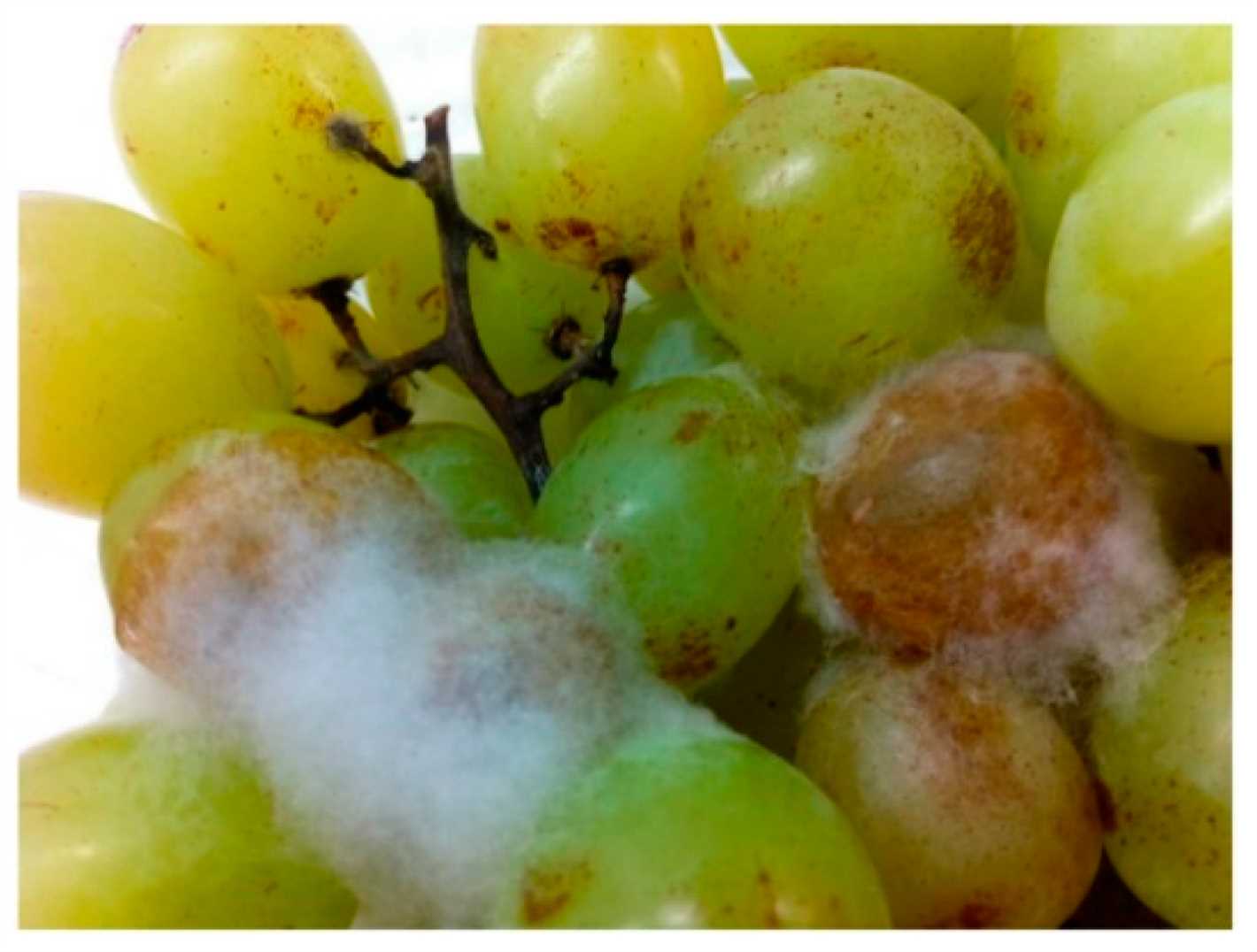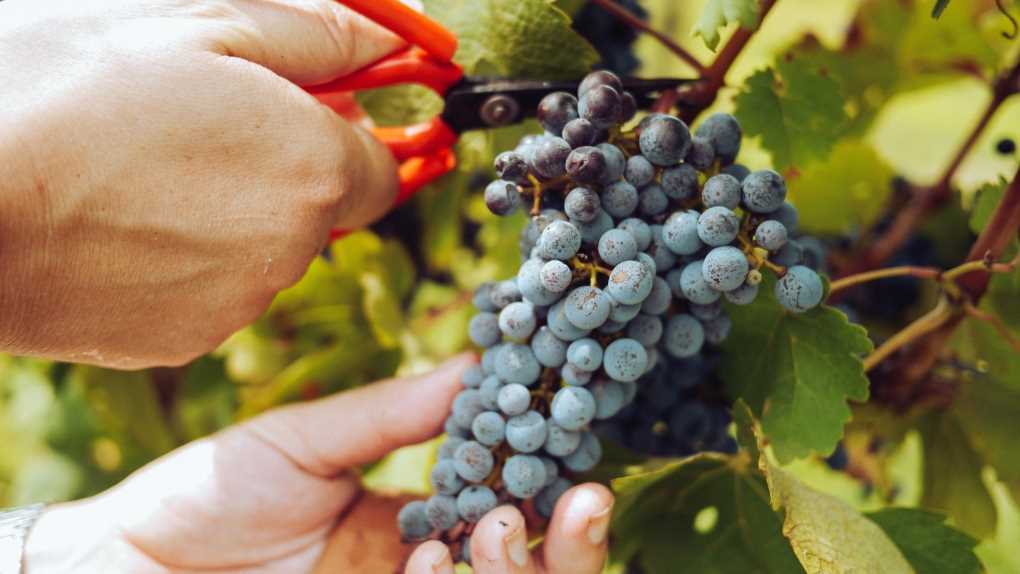- Autumn Treatment of Grapes with Iron Sulfate
- Why use Iron Sulfate?
- What not to mix with Iron Sulfate?
- How does Iron Sulfate help combat grape diseases?
- The Importance of Autumn Treatment
- Control of Grape Diseases
- Prevention of Infections
- Enhanced Plant Health
- Conclusion
- Grapes Diseases Common in Autumn
- Iron Sulfate as a Solution
- Benefits of Using Iron Sulfate
- How to Apply Iron Sulfate
- Compatible and Incompatible Mixtures
- Compatible Mixtures
- Incompatible Mixtures
- Precautions and Safety Measures
- Question-answer:
- What is iron sulfate used for in grape treatment?
- When is the best time to treat grapes with iron sulfate?
- Can iron sulfate be mixed with other treatments?
- How does iron sulfate help combat grape diseases?
- Are there any risks associated with using iron sulfate in grape treatment?
- Can iron sulfate be used on all grape varieties?
- How often should grapes be treated with iron sulfate?
- Video: Grape Vine Black Rot fungal disease and treatment
Grapes are a popular and beloved fruit, known for their delicious taste and versatility in culinary dishes. However, like any plant, grape vines are susceptible to diseases and pests that can threaten their health and productivity. One effective method of protecting grape vines from these threats is by using iron sulfate as a treatment in the autumn. In this article, we will explore the benefits of using iron sulfate, what substances should not be mixed with it, and how it helps combat grape diseases.
Iron sulfate, also known as ferrous sulfate, is a chemical compound that contains iron and sulfur. When applied to grape vines, iron sulfate can help to prevent and control various diseases, including fungal infections and nutrient deficiencies. It works by boosting the overall health and strength of the vines, making them more resistant to pathogens and other stressors. Additionally, iron sulfate can improve the color and quality of grapes, enhancing their market value.
However, it is important to note that iron sulfate should not be mixed with certain substances, as it can react negatively and diminish its effectiveness. For example, iron sulfate should not be mixed with alkaline solutions, such as lime sulfur or Bordeaux mixture, as these can cause the iron to precipitate and become unavailable to the vines. Additionally, iron sulfate should not be applied alongside other foliar fertilizers or pesticides, as this can lead to an overabundance of nutrients or chemicals that can harm the vines.
In conclusion, using iron sulfate as a treatment for grapes in the autumn can be an effective way to combat diseases and improve the overall health and quality of the vines. However, it is essential to follow proper application guidelines and avoid mixing iron sulfate with incompatible substances. By doing so, grape growers can reap the benefits of this treatment and enjoy a successful harvest of healthy and flavorful grapes.
Autumn Treatment of Grapes with Iron Sulfate

Autumn is a critical time for grape growers as it marks the final stage of the growing season and the preparation for the upcoming winter. One important task during this period is the proper treatment of the grapes to combat various diseases and ensure healthy growth in the next season. Iron sulfate is a commonly used treatment for grapes during autumn due to its effectiveness and safety.
Why use Iron Sulfate?
Combatting fungal diseases: Iron sulfate is known for its antifungal properties, making it an excellent solution to prevent diseases like downy mildew and powdery mildew. These fungal diseases can severely impact the yield and quality of grapes if left uncontrolled.
Improved nutrient absorption: Iron sulfate helps in optimizing the absorption of essential nutrients by grapevines. This leads to stronger and healthier plants, which in turn contribute to better grape development and higher yields.
Enhancing color: Iron sulfate can stimulate the production of anthocyanins, which are responsible for the coloration in grapes. This can result in richer and more vibrant colors in the harvested berries.
What not to mix with Iron Sulfate?
While iron sulfate is generally safe to use, there are a few substances that should not be mixed with it:
Lime: Mixing iron sulfate with lime can result in chemical reactions that reduce the effectiveness of both substances. It is best to apply them separately.
Alkaline substances: Avoid mixing iron sulfate with alkaline substances like wood ash or caustic soda as it can cause precipitation and reduce the availability of iron for the plants.
Other pesticides: It is advisable not to mix iron sulfate with other pesticides unless specifically recommended by manufacturers. Mixing different chemicals can lead to unknown reactions and potential harm to the plants.
How does Iron Sulfate help combat grape diseases?

Iron sulfate acts as a preventive and curative treatment against fungal diseases in grapes. It works by inhibiting the growth of fungal spores and disrupting their reproductive cycle.
When applied as a spray, iron sulfate creates a protective barrier on the grape leaves and prevents the germination of fungal spores. This helps in controlling the spread of diseases like downy mildew and powdery mildew.
In addition, iron sulfate can also have a direct toxic effect on fungal pathogens, reducing their viability and preventing further infection.
| Benefits of using Iron Sulfate |
|---|
| Effective against fungal diseases |
| Promotes nutrient absorption |
| Enhances coloration in grapes |
| Safe to use |
The Importance of Autumn Treatment
Autumn treatment of grapes with iron sulfate is a crucial step in ensuring the health and productivity of grape vines. This treatment plays a vital role in controlling various grape diseases and preventing the spread of infections.
Control of Grape Diseases

Grape vines are susceptible to various diseases, such as powdery mildew, downy mildew, and black rot. These diseases can significantly reduce grape yield and quality if left untreated. Autumn treatment with iron sulfate helps control these diseases by preventing the growth and spread of fungus and bacteria that cause them.
Iron sulfate acts as a fungicide, inhibiting the development of fungal spores and preventing them from germinating. By treating the vines in autumn, when the leaves start to fall and the vine goes into dormancy, the iron sulfate can penetrate the plant tissues and provide protection throughout the winter months.
Prevention of Infections
Autumn treatment with iron sulfate also helps prevent the spread of infections from one grapevine to another. Grape diseases can easily spread through spores and infected plant material. By applying iron sulfate to the vines, it creates a barrier that inhibits the transfer of infections from infected to healthy plants.
Iron sulfate is also effective in killing bacteria and fungi present on the grapevine’s surface. This further reduces the risk of infections and ensures that the vines remain healthy and disease-free during the winter season.
Enhanced Plant Health
In addition to disease control and prevention, autumn treatment with iron sulfate enhances the overall health of the grapevines. Iron is an essential micronutrient for plants, and its deficiency can lead to various physiological disorders.
Iron sulfate provides the vines with a sufficient amount of iron, promoting healthy growth and development. It aids in the production of chlorophyll, which is vital for photosynthesis, and helps the vines withstand environmental stresses, such as cold temperatures and winter dormancy.
Conclusion

The autumn treatment of grapes with iron sulfate is an essential practice for maintaining the health and productivity of grapevines. It effectively controls grape diseases, prevents the spread of infections, and enhances the overall health of the vines. By prioritizing autumn treatment, grape growers can ensure a fruitful harvest and maintain the longevity of their vineyards.
Grapes Diseases Common in Autumn
Powdery mildew: This fungal disease appears as a white, powdery coating on the leaves, stems, and fruit. It can cause stunted growth, reduced yield, and shriveled grapes if left untreated.
Botrytis bunch rot: This grey mold disease affects the clusters of grapes, causing them to rot and become covered with fuzzy grey mold. It can lead to significant crop loss if not managed properly.
Downy mildew: This fungal disease usually affects the leaves and can cause yellow or brown spots on the upper surfaces. It can weaken the vine and reduce fruit quality.
Black rot: This fungal disease causes black, sunken lesions on the grapes, leaves, and stems. It can lead to fruit rot and shriveling if not controlled.
Phomopsis cane and leaf spot: This fungal disease causes small, dark lesions on the leaves and canes. It can weaken the vine and reduce fruit quality if left unchecked.
These grape diseases are common in autumn and can have a detrimental effect on the health and yield of the vineyard. It is important to implement proper disease management strategies, including regular inspections, cultural practices, and the use of appropriate fungicides to combat these diseases and protect the grape crop.
Iron Sulfate as a Solution
Iron sulfate, also known as ferrous sulfate or iron vitriol, is a chemical compound that contains iron in its reduced form. It is a popular agricultural supplement that is used in the treatment of various grape diseases and deficiencies during the autumn season.
Key Benefits of Iron Sulfate:
- Improves Soil Conditions: Iron sulfate helps in improving the overall health and fertility of the soil, making it more suitable for grape cultivation. It enhances the absorption of essential nutrients by the plants and promotes healthy root development.
- Controls Grape Diseases: Iron sulfate can effectively control and prevent various grape diseases, including chlorosis (yellowing of leaves), fungal infections, and vine decline. It acts as a fungicide and bactericide, inhibiting the growth and spread of harmful microorganisms.
- Corrects Nutrient Deficiencies: Iron sulfate is rich in iron, an essential nutrient required by grapevines for proper growth and development. It helps in correcting iron deficiencies, which can cause stunted growth, reduced fruit yield, and poor-quality grapes.
- Enhances Fruit Quality: Treating grapes with iron sulfate can improve the overall quality of the fruits. It helps in enhancing their color, flavor, and shelf life, making them more appealing to consumers.
Application of Iron Sulfate:
The application of iron sulfate should be done carefully, keeping in mind the following considerations:
- Iron sulfate should be mixed with water according to the recommended dosage. It is important to follow the instructions provided on the product label or consult an agricultural specialist.
- It should not be mixed with alkaline substances, as this can reduce its effectiveness. Avoid combining it with lime or other high-pH fertilizers.
- The application should be carried out during the autumn season, preferably after the grape harvest. This allows the plants to absorb the nutrients and recover from any diseases or deficiencies before the winter season.
- Iron sulfate can be applied as a foliar spray or as a soil drench around the base of the grapevines. Both methods can be effective, but the choice depends on the specific requirements of the grape variety and the severity of the disease or deficiency.
Conclusion:
Iron sulfate is a valuable solution for the treatment of grape diseases and deficiencies during the autumn season. Its beneficial properties help in improving soil conditions, controlling diseases, correcting nutrient deficiencies, and enhancing fruit quality. However, it is important to follow proper application procedures and avoid mixing it with alkaline substances for optimal results.
Benefits of Using Iron Sulfate
Iron sulfate is a valuable tool in the treatment and prevention of grape diseases. It offers several benefits that make it a popular choice among grape growers:
- Disease control: Iron sulfate is highly effective in controlling fungal diseases such as downy mildew and powdery mildew. It acts as a fungicide by inhibiting the growth of fungal spores and preventing them from infecting the grapevines.
- Nutrient supplementation: Iron sulfate provides essential nutrients to the grapevines, particularly iron. Iron is an important micronutrient for plant growth and development, and its deficiency can lead to yellowing of leaves and reduced yield. By applying iron sulfate, growers can ensure that the grapevines receive an adequate supply of iron.
- Improves leaf color: Iron sulfate helps improve the color of grape leaves, giving them a darker and healthier appearance. This is especially beneficial during the autumn season when grapevines start preparing for dormancy. Darker leaves are better able to photosynthesize and store carbohydrates, which contribute to the overall health of the vines.
- Enhances grape quality: When used properly, iron sulfate can improve the quality of grapes. By controlling diseases and providing necessary nutrients, it helps in the production of healthier and more robust grapes. This can result in better flavor, color, and overall market value of the grapes.
- Ease of application: Iron sulfate is relatively easy to apply and can be used in various forms such as liquid sprays or granules. It can be mixed with other compatible products for a comprehensive approach to grape disease control. However, it is important to note that iron sulfate should not be mixed with certain chemicals to avoid negative interactions.
In conclusion, the use of iron sulfate in the treatment of grapes offers numerous benefits, ranging from disease control to enhanced grape quality. The proper application of iron sulfate can contribute to the overall health and productivity of grapevines, ensuring a successful harvest season.
How to Apply Iron Sulfate
Iron sulfate is a commonly used treatment for grape diseases during the autumn season. It helps combat various fungal infections and strengthens the overall health of grapevines. Here is a step-by-step guide on how to apply iron sulfate:
- Choose the right time: It’s best to apply iron sulfate to grapevines during the dormant season, which is usually in late autumn or early winter. This allows the treatment to be effective before the start of the growing season.
- Prepare the solution: Dissolve the recommended amount of iron sulfate in water according to the instructions on the product label. The amount of iron sulfate required may vary depending on the size of your vineyard and the severity of the disease.
- Protect yourself: Before applying the solution, make sure to wear protective clothing, goggles, and gloves to avoid any contact with the chemical.
- Apply the solution: Use a sprayer or a backpack sprayer to evenly distribute the iron sulfate solution onto the grapevines. Start at the base of the plants and work your way up, making sure to cover both the upper and lower surfaces of the leaves.
- Avoid mixing: It is important not to mix iron sulfate with other chemicals, as it may react and reduce the effectiveness of the treatment. Always apply iron sulfate separately.
- Follow dosage instructions: Be careful not to exceed the recommended dosage of iron sulfate, as it can cause harm to the plants. Follow the instructions provided by the manufacturer or seek guidance from a professional.
- Repeat if necessary: Depending on the severity of the grape diseases, you may need to repeat the iron sulfate treatment. Follow the recommended intervals mentioned on the product label or consult an expert for guidance.
By following these steps, you can effectively apply iron sulfate to treat grape diseases and promote the health of your grapevines. Remember to always read and follow the instructions provided by the manufacturer for the best results.
Compatible and Incompatible Mixtures
Compatible Mixtures

When treating grapes with iron sulfate, it is important to know which substances can be mixed together without causing any negative effects. Here are some compatible mixtures:
- Iron sulfate can be mixed with water to create a solution which can then be sprayed onto the plants. This is the most common and effective method of applying the treatment.
- Iron sulfate can also be mixed with other fungicides or pesticides that are approved for use on grapes. However, it is important to carefully read the labels of these products and consult with a professional to ensure compatibility.
- Some organic additives, such as seaweed extract, can also be mixed with iron sulfate to enhance its effectiveness and provide additional nutrients to the plants.
Incompatible Mixtures

On the other hand, there are certain substances that should not be mixed with iron sulfate as they can cause adverse reactions or reduce the effectiveness of the treatment. Here are some incompatible mixtures:
- Iron sulfate should not be mixed with alkaline substances, such as lime or calcium-based fertilizers. These can react with the iron sulfate and form insoluble compounds, rendering the treatment ineffective.
- Iron sulfate should not be mixed with other foliar fertilizers or mineral oils. These substances can interact with the iron sulfate and reduce its efficacy, resulting in ineffective treatment.
It is important to always follow the instructions provided by the manufacturer and consult with a professional before mixing iron sulfate with any other substances. This will help ensure that the treatment is applied correctly and effectively, maximizing its benefits in combating grape diseases.
Precautions and Safety Measures
- Always wear protective clothing, such as gloves, goggles, and a mask, when handling iron sulfate. This will help prevent direct contact with the skin and inhalation of the product.
- Keep iron sulfate out of reach of children and pets to avoid accidental ingestion or exposure.
- Store iron sulfate in a cool, dry place, away from direct sunlight and sources of heat. Make sure to properly seal the container to prevent moisture absorption.
- Do not mix iron sulfate with other chemicals or pesticides unless instructed to do so by a professional. Mixing incompatible substances can result in toxic reactions and reduced efficacy.
- Before applying iron sulfate to grape vines, read and follow the instructions on the product label carefully. Use the recommended dosage and application method to ensure proper and safe use.
- Avoid spraying iron sulfate on windy days to minimize drift and potential contact with non-target plants or sensitive areas.
- Clean all equipment thoroughly after application to prevent cross-contamination with other chemicals or future damage to plants.
- If accidental exposure or ingestion occurs, seek medical attention immediately and bring the product label or container for reference.
Following these precautions and safety measures will help ensure the safe and effective use of iron sulfate in the treatment of grape diseases during the autumn season.
Question-answer:
What is iron sulfate used for in grape treatment?
Iron sulfate is commonly used in grape treatment to combat various diseases and deficiencies in the plants. It helps to prevent and treat diseases such as chlorosis, which causes yellowing of the leaves due to iron deficiency. Iron sulfate also helps in correcting the pH level of the soil, making it more suitable for grape cultivation.
When is the best time to treat grapes with iron sulfate?
The best time to treat grapes with iron sulfate is during the autumn season. This is because the autumn treatment provides the grapes with sufficient time to absorb the nutrients and enhance their resistance to diseases before the onset of winter. It is important to carry out the treatment before the first frost to ensure effective results.
Can iron sulfate be mixed with other treatments?
Iron sulfate should not be mixed with certain treatments and chemicals. It is not recommended to mix iron sulfate with alkaline substances or fertilizers rich in calcium, as these can reduce the effectiveness of the treatment. It is important to read the instructions carefully and consult a professional before combining iron sulfate with other treatments.
How does iron sulfate help combat grape diseases?
Iron sulfate helps combat grape diseases by providing the plants with essential nutrients, particularly iron. Iron deficiency is a common cause of diseases in grapes, and by supplementing the plants with iron sulfate, their overall health and resistance to diseases can be improved. Iron sulfate also enhances the plants’ ability to absorb other nutrients, leading to better overall plant growth and disease resistance.
Are there any risks associated with using iron sulfate in grape treatment?
While using iron sulfate in grape treatment is generally safe, it is important to follow the instructions and dosage recommendations. Excessive use of iron sulfate can lead to nutrient imbalances in the soil and may negatively affect the grape plants. Additionally, improper mixing of iron sulfate with other chemicals can result in adverse reactions. It is always recommended to consult a professional before using iron sulfate in grape treatment.
Can iron sulfate be used on all grape varieties?
Iron sulfate can be used on all grape varieties, as it helps to correct iron deficiencies in the plants. However, it is important to consider the specific needs of each grape variety before applying iron sulfate. Different grape varieties may have varying levels of iron tolerance, so it is advisable to consult a professional or refer to specific guidelines for each grape variety.
How often should grapes be treated with iron sulfate?
The frequency of grape treatment with iron sulfate depends on the specific needs of the plants and the severity of any deficiencies or diseases. Generally, it is recommended to treat grapes with iron sulfate once a year during the autumn season. However, if the plants continue to exhibit signs of iron deficiency or other diseases, additional treatments may be necessary. It is important to monitor the plants closely and consult a professional for specific recommendations.







